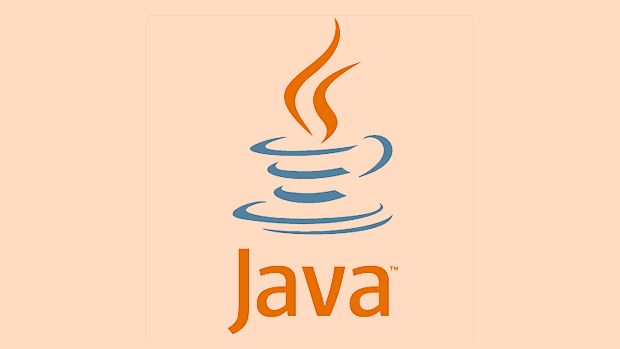What is the difference between ArrayList and LinkedList in Java?
Jul 12, 2025 am 02:58 AMChoosing ArrayList or LinkedList in Java depends on the usage scenario. 1. When accessing elements frequently through indexes, ArrayList should be selected, because it is based on dynamic array implementation and supports fast random access of O(1) time complexity; 2. When performing intermediate insertion or deletion operations frequently, LinkedList should be selected, because it is based on a bidirectional linked list implementation and supports O(1) time complexity operations (if there are already node references); 3. In terms of memory, ArrayList is more compact, while LinkedList causes higher memory overhead due to storing additional pointers; 4. The iterative performance of the two is similar, but ArrayList is more suitable for repeated get(i). Therefore, choose the appropriate data structure according to the specific needs.

In Java, both ArrayList and LinkedList are commonly used to store collections of objects, but they work differently under the hood and perform better in different scenarios. The main difference lies in their internal structure: ArrayList is based on a dynamic array, while LinkedList uses a double-linked list.

If you're choosing between them, it's important to understand how each affects performance for operations like adding, removing, or accessing elements.

When Access Speed ??Matters: ArrayList Wins
If your code needs to frequently retrieve elements by index — say, using get(index) — then ArrayList is usually the better choice. Why? Because it stores elements in continuous memory locations, so accessing an element at any position takes constant time ( O(1) ).
For example:

List<String> list = new ArrayList<>();
list.add("A");
list.add("B");
list.add("C");
String secondItem = list.get(1); // Fast access This makes ArrayList ideal for situations where you read more than you modify.
However, if you're inserting or deleting elements from the middle of the list often, especially with large datasets, this can be slower because the underlying array may need to be resized or shifted.
When Modifying Often: LinkedList Can Be Better
On the flip side, if your application does a lot of insertions or deletions — especially in the middle of the list — LinkedList can outperform ArrayList . That's because those operations only require updating a few points in the linked nodes, not shifting large chunks of data.
For instance:
List<String> list = new LinkedList<>();
list.add("A");
list.add("B");
list.add("C");
list.add(1, "X"); // Inserting in the middle This kind of operation runs in O(1) time if you already have a reference to the node (like when iterating with a ListIterator ). But if you don't, you still need to traverse the list to find the right spot, which takes linear time ( O(n) ).
Also, LinkedList has built-in support for efficient add/remove operations at both ends, offering methods like addFirst() and addLast() .
Memory Overhead and Practical Considerations
Another thing to consider is memory usage. Each node in a LinkedList contains not just the element value, but also references to the next and previous nodes. This extra overhead means that LinkedList typically uses more memory than an ArrayList of the same size.
Here's a quick comparison:
-
ArrayList: More compact, good for mostly reading and occasional updates. -
LinkedList: Higher memory footprint, better for frequent insertions and deletions.
Also, keep in mind:
- Iterating through both lists is generally similar in performance.
-
ArrayListsupports random-access efficiently;LinkedListdoesn't. - If you're using a loop that calls
get(i)repeatedly,ArrayListwill feel much smoother.
So, choosing between ArrayList and LinkedList really depends on what your program does most. It's not about one being universally better — it's about matching the data structure to your use case.
Basically that's it.
The above is the detailed content of What is the difference between ArrayList and LinkedList in Java?. For more information, please follow other related articles on the PHP Chinese website!

Hot AI Tools

Undress AI Tool
Undress images for free

Undresser.AI Undress
AI-powered app for creating realistic nude photos

AI Clothes Remover
Online AI tool for removing clothes from photos.

Clothoff.io
AI clothes remover

Video Face Swap
Swap faces in any video effortlessly with our completely free AI face swap tool!

Hot Article

Hot Tools

Notepad++7.3.1
Easy-to-use and free code editor

SublimeText3 Chinese version
Chinese version, very easy to use

Zend Studio 13.0.1
Powerful PHP integrated development environment

Dreamweaver CS6
Visual web development tools

SublimeText3 Mac version
God-level code editing software (SublimeText3)

Hot Topics
 Difference between HashMap and Hashtable?
Jun 24, 2025 pm 09:41 PM
Difference between HashMap and Hashtable?
Jun 24, 2025 pm 09:41 PM
The difference between HashMap and Hashtable is mainly reflected in thread safety, null value support and performance. 1. In terms of thread safety, Hashtable is thread-safe, and its methods are mostly synchronous methods, while HashMap does not perform synchronization processing, which is not thread-safe; 2. In terms of null value support, HashMap allows one null key and multiple null values, while Hashtable does not allow null keys or values, otherwise a NullPointerException will be thrown; 3. In terms of performance, HashMap is more efficient because there is no synchronization mechanism, and Hashtable has a low locking performance for each operation. It is recommended to use ConcurrentHashMap instead.
 Why do we need wrapper classes?
Jun 28, 2025 am 01:01 AM
Why do we need wrapper classes?
Jun 28, 2025 am 01:01 AM
Java uses wrapper classes because basic data types cannot directly participate in object-oriented operations, and object forms are often required in actual needs; 1. Collection classes can only store objects, such as Lists use automatic boxing to store numerical values; 2. Generics do not support basic types, and packaging classes must be used as type parameters; 3. Packaging classes can represent null values ??to distinguish unset or missing data; 4. Packaging classes provide practical methods such as string conversion to facilitate data parsing and processing, so in scenarios where these characteristics are needed, packaging classes are indispensable.
 What are static methods in interfaces?
Jun 24, 2025 pm 10:57 PM
What are static methods in interfaces?
Jun 24, 2025 pm 10:57 PM
StaticmethodsininterfaceswereintroducedinJava8toallowutilityfunctionswithintheinterfaceitself.BeforeJava8,suchfunctionsrequiredseparatehelperclasses,leadingtodisorganizedcode.Now,staticmethodsprovidethreekeybenefits:1)theyenableutilitymethodsdirectly
 How does JIT compiler optimize code?
Jun 24, 2025 pm 10:45 PM
How does JIT compiler optimize code?
Jun 24, 2025 pm 10:45 PM
The JIT compiler optimizes code through four methods: method inline, hot spot detection and compilation, type speculation and devirtualization, and redundant operation elimination. 1. Method inline reduces call overhead and inserts frequently called small methods directly into the call; 2. Hot spot detection and high-frequency code execution and centrally optimize it to save resources; 3. Type speculation collects runtime type information to achieve devirtualization calls, improving efficiency; 4. Redundant operations eliminate useless calculations and inspections based on operational data deletion, enhancing performance.
 What is an instance initializer block?
Jun 25, 2025 pm 12:21 PM
What is an instance initializer block?
Jun 25, 2025 pm 12:21 PM
Instance initialization blocks are used in Java to run initialization logic when creating objects, which are executed before the constructor. It is suitable for scenarios where multiple constructors share initialization code, complex field initialization, or anonymous class initialization scenarios. Unlike static initialization blocks, it is executed every time it is instantiated, while static initialization blocks only run once when the class is loaded.
 What is the Factory pattern?
Jun 24, 2025 pm 11:29 PM
What is the Factory pattern?
Jun 24, 2025 pm 11:29 PM
Factory mode is used to encapsulate object creation logic, making the code more flexible, easy to maintain, and loosely coupled. The core answer is: by centrally managing object creation logic, hiding implementation details, and supporting the creation of multiple related objects. The specific description is as follows: the factory mode handes object creation to a special factory class or method for processing, avoiding the use of newClass() directly; it is suitable for scenarios where multiple types of related objects are created, creation logic may change, and implementation details need to be hidden; for example, in the payment processor, Stripe, PayPal and other instances are created through factories; its implementation includes the object returned by the factory class based on input parameters, and all objects realize a common interface; common variants include simple factories, factory methods and abstract factories, which are suitable for different complexities.
 What is the `final` keyword for variables?
Jun 24, 2025 pm 07:29 PM
What is the `final` keyword for variables?
Jun 24, 2025 pm 07:29 PM
InJava,thefinalkeywordpreventsavariable’svaluefrombeingchangedafterassignment,butitsbehaviordiffersforprimitivesandobjectreferences.Forprimitivevariables,finalmakesthevalueconstant,asinfinalintMAX_SPEED=100;wherereassignmentcausesanerror.Forobjectref
 What is type casting?
Jun 24, 2025 pm 11:09 PM
What is type casting?
Jun 24, 2025 pm 11:09 PM
There are two types of conversion: implicit and explicit. 1. Implicit conversion occurs automatically, such as converting int to double; 2. Explicit conversion requires manual operation, such as using (int)myDouble. A case where type conversion is required includes processing user input, mathematical operations, or passing different types of values ??between functions. Issues that need to be noted are: turning floating-point numbers into integers will truncate the fractional part, turning large types into small types may lead to data loss, and some languages ??do not allow direct conversion of specific types. A proper understanding of language conversion rules helps avoid errors.






